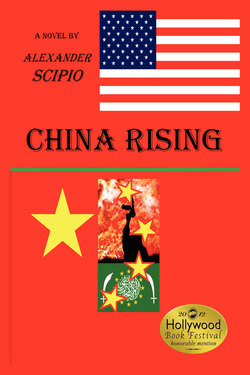Читать книгу China Rising - Alexander Scipio - Страница 17
На сайте Литреса книга снята с продажи.
14
ОглавлениеIndian Ocean
Thursday, 11 April, 13:50 hours GMT (19:20 Local)
Looking from the Captain’s bridge of his new command, the Chinese aircraft carrier Lanzhou, pennant number 170, the first carrier in the history of the Chinese navy, Admiral Ying gazed across the expanse of sea covered by his battle group of surface combatants and transport ships.
Having transited the Strait of Malacca without incident, Admiral Ying led the group south with a published goal of rounding Australia and returning to the South China Sea after the two-week shakedown cruise.
When queried by an earlier American secretary of defense on China’s need for a blue-water navy, and in particular, an aircraft carrier, General Hu, head of the Chinese military, seemingly surprised, had replied, “America has for years asked us to bear a greater security role, one commensurate with our economic size. Our now offering to do so, in fact, to provide more sea-lane protection than America seems able to provide to ships in the far-western Pacific and Indian Ocean, is something for which we should be thanked, not criticized, no?”
He, of course, had been correct. America’s navy had seemed unable – or unwilling (the result was the same on the crews of ships taken by pirates) – to protect the sea lanes for which America ostensibly needed such a huge navy. The rest of the world seemed not to be worried about a single carrier and a small task force thousands of kilometers from Europe or America. If it kept merchant ships safe and their cargoes protected, what was the problem?
Accompanying his carrier were four other surface combatants, and twelve military transport vessels carrying thousands of combat-ready Marines and soldiers.
Not part of the information published to the other navies in the area, twenty re-commissioned American and European vacation-style cruise ships recently had joined the task force. Purchased recently and quickly refurbished in seaports in Indonesia, India and Sri Lanka to carry between five and ten thousand people each in a style noticeably below their original luxury, and for only a few days’ duration, these ships looked out-of-place on the shakedown cruise.
Ying’s force represented the forefront of the first true blue-water, open-ocean capability for China since the Ming Dynasty.
In 1420, the Chinese Navy had made her the most powerful maritime nation on earth. Afraid of outside influence, and certain nothing was to be learned from foreigners, the Emperor had banned ships and international trade. The largest wooden ships ever built were burned to the waterline and sunk. Within decades the knowledge of their construction and use had been lost.
The Chinese Navy was about to come back.
The Officer of the Deck approached and saluted, then held out a sheet of paper on which was printed a single word. Received moments before from Beijing, decrypted, and now delivered to its addressee, that word was, “Go.”
Admiral Ying took the paper, nodded, folded and put it into his pocket. Again he looked across his ships, then turned and walked onto the Bridge. As he entered, the captain of the ship stood to attention only to be waved back into his seat by the admiral.
“Captain, please make a heading of 300 degrees magnetic,” he said calmly. “Make turns for 22 knots.”
The Lanzhou turned to the new heading and slowly accelerated. The vessels in his group turned with him and the entire flotilla now steamed toward the Arabian Peninsula.
10,000 meters off his port bow, moving slowly enough to barely make steerage-way at a depth of 100 meters, Captain Bill Grant, commanding officer of the fast-attack submarine USS California leading Task Force-19, listened to the movement of the Chinese ships. Grant and two sister fast-attack submarines nearby had shadowed the Chinese ships since they had entered the Indian Ocean.
Recording the transit of competing navies was part of the normal tasking of TF-19, a small submarine force covertly roaming the Indian Ocean. By moving slowly to avoid making noise when in close contact with the Chinese vessels, and then jumping wide around them when the Chinese flotilla was far enough away not to be able to detect the covert force, racing ahead in their predicted course and awaiting them again, Grant and his three submarines had managed to remain undetected, but in contact with them for over a thousand miles, reporting regularly through CINCSUBPAC of the status of the ships he was shadowing.
